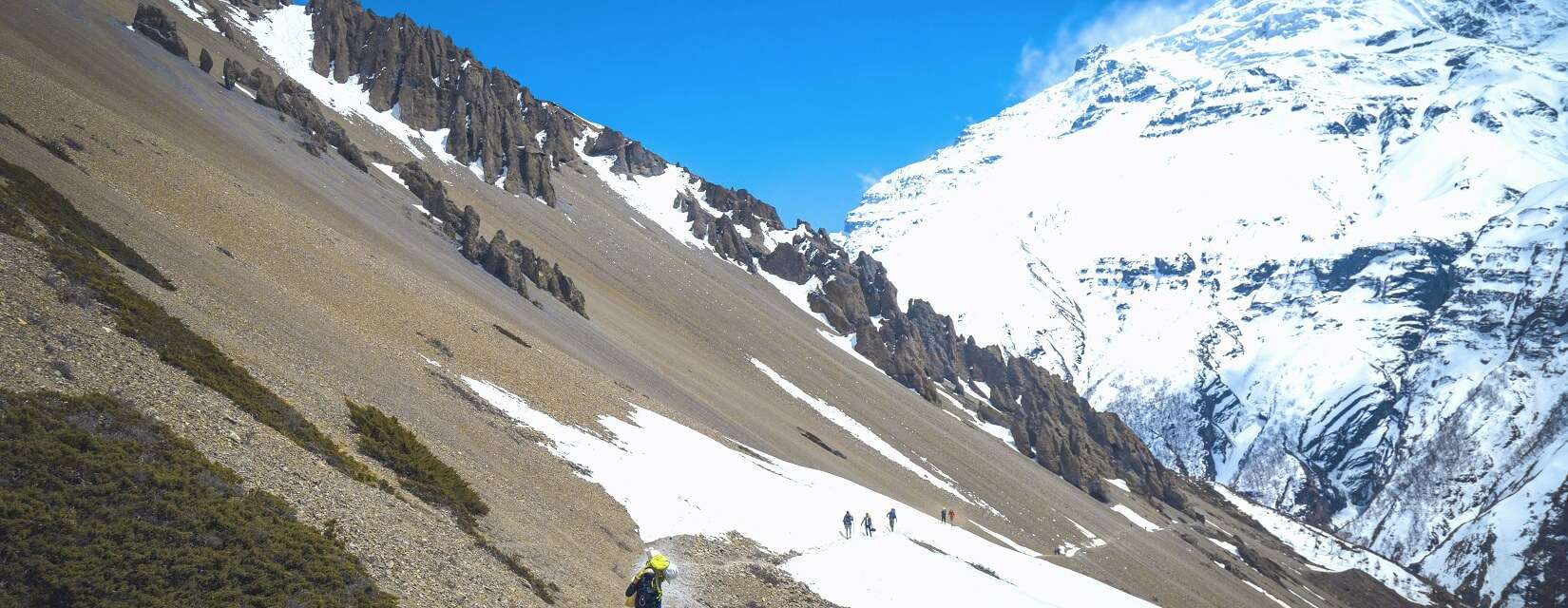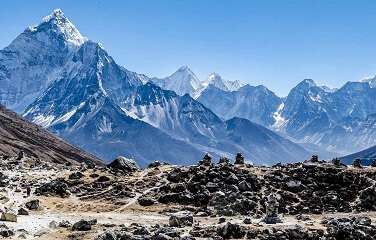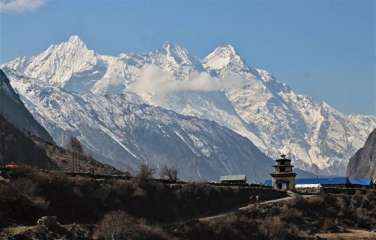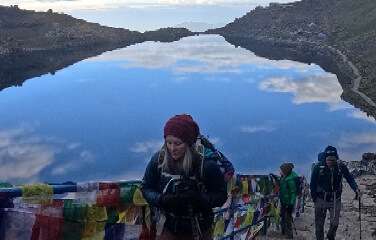The governing body that oversees Nepal's restricted areas
The Department of Immigration and other pertinent Authorities assist the Nepalese government in enforcing legislative laws to manage access to these restricted locations. These rules cover things like the need for permits, required guided tours, permit fees, how long permits are valid, and how closely rules about local customs, environmental standards, and cultural sensitivities must be followed.
Differentiating Between Restricted and Accessible Areas

Nepal's accessible regions offer open access, a well-developed infrastructure for tourists, and ease of accessibility. On the other hand, because of their difficult terrain, isolation, importance to conservation, or security issues, restricted regions require specific licenses.
In Nepal, who has to get a permit to enter restricted areas?
A Restricted locations Permit (RAP) is required for foreign nationals to enter certain locations, such as Upper Mustang, Manaslu, Tsum Valley, etc. These RAP permits are extra expensive and are only available via an approved trekking agency and the Department of Immigration in Kathmandu.
Trekkers can trek as Free Individual Trekkers (FIT), without a guide or agency, on many popular trekking trails, such as the Everest Region Trek, the Annapurna Region Trek, the Langtang Region Trek, etc., by paying the conservation areas' entrance fee, which can be easily obtained in the Nepal Tourism Board office in Kathmandu or Pokhara.
Upper Mustang

The region of Upper Mustang is found in Nepal's north-central region. Because of its location in the Himalayan rain shadow, the area has a distinctive desert-like appearance. It is constrained to preserve its old customs and culture, which are influenced by Tibet. To explore this mysterious country, visitors must get a special Restricted Area Permit (RAP) and go with a recognized trekking firm. The walled city of Lo Manthang, historic monasteries, vibrant rock formations, sky caves, eerie customs like Sky Burial, Bon and Buddhist traditions, and breathtaking vistas of the Annapurna and Nilgiri mountains are among the main draws.
| Upper Mustang Trek | Book Now |
| Lower Mustang Trek | Book Now |
| Jomsom Muktinath Trek | Book Now |
Restricted Parts:
- Lo Manthang Rural Municipality (Ward nos. 1 to 5 all areas)
- Lo-Gekar Damodar Kunda Rural Municipality (Ward nos. 1 to 5 all areas)
- Baragung Mukti chetra Rural Municipality (Ward nos. 3 all areas and Satang village of ward no 5)
Upper Mustang RAP Costs:
- USD 500 per person (10 days) + extra USD 50 per person per day (beyond 10 days)
Manaslu Trek

The Manaslu region is renowned for offering tourists from outside the country some of the greatest natural and cultural attractions. It does, however, contain two distinct restricted zones; the Manaslu CA is the first. When following the standard route, you will spend more than five days in this region, beginning in Jagat and ending in Samagaon.
| Manaslu Circuit Trek | Book Now |
| Manaslu Tsum Valley Trek | Book Now |
| Tsum Valley Trek | Book Now |
Restricted Parts:
- Tsumnubri Rural Municipality (Ward nos. 1 to 4 all areas )
Manaslu Conservation Area RAP Costs:
- USD 100 per person (7 days) + extra USD 15/person per day (beyond 7 days) [Sep-Nov]
- USD 75 per person (7 days) + extra USD 10/person per day (beyond 7 days) [Dec-Aug]
Manang Nar Phu Valley

When visiting the generally well-known Annapurna Region, visitors can get the ideal off-the-beaten-path experience in the Nar Phu region. Trekkers can reach the historically, traditionally, and culturally significant settlements of Nar and Phu by taking a diversion off the main track. Many people view this walk as a well-preserved equivalent of the Upper Dolpo in western Nepal.
| Nar Phu Valley Trek 10 Days | Book Now |
| Nar Phu with Annapurna Trek | Book Now |
Restricted Parts:
- Narpa Rural Municipality (Ward nos. 1 to 5 all areas)
- Nasho Rural Municipality (Ward nos. 6, and 7 all areas)
Manang Nar Phu RAP Costs:
- USD 100 per person (7 days) + extra USD 15/person per day (beyond 7 days) [Sep-Nov]
- USD 75 per person (7 days) + extra USD 10/person per day (beyond 7 days) [Dec-Aug]
Makalu Region

With stunning views of both the Everest and Kanchenjunga massifs, the Makalu region offers visitors exciting travel opportunities. The Kimathanka, Chepuwa, Hatiya, and Pawakhola villages—and, more significantly, the Makalu Barun National Park—are situated inside the restricted region. It's a great place to take pictures of wildlife as well.
| Makalu Base Camp Trek | Book Now |
Restricted Parts:
- Bhot Khola Rural Municipality (Ward nos. 1 to 5 all areas)
- Makalu Rural Municipality (Ward no. 4 all areas)
Sankhuwasabha Makalu Region RAP Costs:
- USD 10 per person (first 4 weeks) + extra USD 20 per week (beyond 4 weeks)
Upper Dolpo

Upper Dolpo, which is in the extreme west, is well known for its untamed landscape and isolation. Its scope is limited to preserving its unspoiled natural beauty and safeguarding the cultural legacy of its native Dolpo-pa people.
Entering this restricted area requires obtaining a specific RAP. The Phoksundo Lake, Shey Gompa, distinctive Bon, and Buddhist temples, and the opportunity to see the people's nomadic way of life are some of the major attractions of Upper Dolpo.
Restricted Parts:
- Dolpo Buddha Rural Municipality (Ward nos. 4 to 6 all areas)
- Shey Phoksundo Rural Municipality (Ward nos. 1 to 7 all areas)
- Charka Tangsong Rural Municipality (Ward nos. 1 to 6 all areas)
Upper Dolpo RAP Costs:
- USD 500 per person (10 days) + extra USD 50 per day (beyond 10 days)
Lower Dolpo

Situated in the Midwest, Lower Dolpo is restricted to preserve its natural beauty and cultural legacy. The region is well-known for its untamed landscape, historic monasteries, and ethereal Phoksundo Lake. To visit Lower Dolpo, visitors must receive a RAP.
Restricted Parts:
- Thuli Bheri municipality (Ward nos. 1 to 11 all areas)
- Tripurasundari municipality (Ward nos. 1 to 11 all areas)
- Dolpo Buddha Rural Municipality (Ward nos. 1 to 3 all areas)
- Shey Phoksundo Rural Municipality (Ward nos. 8 and 9 all areas)
- Jagdulla Rural Municipality (Ward nos. 1 to 6 all areas)
- Mudkechula Rural Municipality (Ward nos. 1 to 9 all areas)
- Kaike Rural Municipality (Ward nos. 1 to 7 all areas)
Lower Dolpo RAP Costs:
- USD 20 per person (7 days) + extra USD 5 per day (beyond 7 days)
When I'm in a medical emergency and a restricted area, do I get helicopter rescue?
Oh, without a doubt! Helicopter rescue is an alternative if you find yourself in one of those forbidden zones in the event of a medical emergency. However, pause here as there are a few considerations you should make. The Civil Aviation Authority of Nepal (CAAN), the Immigration Department, and the Home Ministry must first issue you with a permit. This is the situation, my friend. There aren't many medical facilities in these limited locations because they are isolated. That is the primary reason for the existence of the helicopter rescue option. They leap in to turn the tide. In addition, they airlift you to a location where you can receive the necessary medical care.
Hold on, though. There's more! The district officer has to be informed about the rescue operation; after all, safety comes first. Thus, let the district officials know what's going on and bring them along in the helicopter. And the crew of the helicopter? They also require some information. such as the kind of helicopter they're flying and the direction they're going. In addition, how many heroes—er, passengers—will be traveling with them? To ensure that everything goes according to plan, they must have all the information. Helicopter rescue is an option if you're a visitor in these restricted zones and find yourself in a medical emergency.





